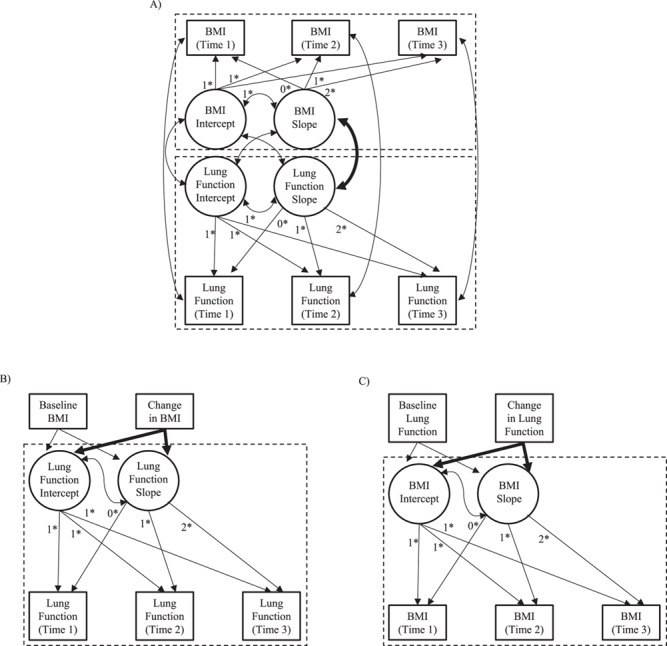Figure 1.

Conceptual distinctions between dyadic and nondyadic growth models for examining associations between weight gain and lung function decline. Rectangles represent observed variables, and circles represent latent variables. Curved arrows represent covariances, and straight arrows represent regression parameters. Fixed parameters are denoted by an asterisk (*). The arrow representing the parameter of interest is bolded in each panel; in dyadic models (A), the focus is on the covariation between simultaneous rates of change in body mass index (BMI; weight (kg)/height (m)2) and lung function. In nondyadic models, the focus is on the estimated (presumed causal) effect of change in BMI on lung function (B) or the estimated effect of change in lung function on BMI (C).
